- Felisac
- September 18, 2023
- 2:16 am

Harry Collins
Answered on 2:16 am
The maximum power consumption of 400G OSFP and QSFP-DD transceivers depends on the type and specification of the products. However, some general comparisons can be made based on the following information:
OSFP allows higher power consumption of 12~15W, while the QSFP-DD allows lower power consumption of 7~12W.
The QSFP-DD ZR variant has a maximum power consumption of 12W.
The QSFP-DD ZR Plus variant has a maximum power consumption of 15W.
Coherent DWDM transceivers may draw up to as much as 24W per port.
People Also Ask
AI Compute Clusters: Powering the Future
In recent years, the global rise of artificial intelligence (AI) has captured widespread attention across society. A common point of discussion surrounding AI is the concept of compute clusters—one of the three foundational pillars of AI, alongside algorithms and data. These compute clusters serve as the primary source of computational
Data Center Switches: Current Landscape and Future Trends
As artificial intelligence (AI) drives exponential growth in data volumes and model complexity, distributed computing leverages interconnected nodes to accelerate training processes. Data center switches play a pivotal role in ensuring timely message delivery across nodes, particularly in large-scale data centers where tail latency is critical for handling competitive workloads.
Comprehensive Guide to 100G BIDI QSFP28 Simplex LC SMF Transceivers
The demand for high-speed, cost-effective, and fiber-efficient optical transceivers has surged with the growth of data centers, telecommunications, and 5G networks. The 100G BIDI QSFP28 (Bidirectional Quad Small Form-Factor Pluggable 28) transceiver is a standout solution, enabling 100 Gigabit Ethernet (100GbE) over a single-mode fiber (SMF) with a simplex LC
NVIDIA SN5600: The Ultimate Ethernet Switch for AI and Cloud Data Centers
The NVIDIA SN5600 is a cutting-edge, high-performance Ethernet switch designed to meet the demanding needs of modern data centers, particularly those focused on artificial intelligence (AI), high-performance computing (HPC), and cloud-scale infrastructure. As part of NVIDIA’s Spectrum-4 series, the SN5600 delivers unparalleled throughput, low latency, and advanced networking features, making
How Ethernet Outpaces InfiniBand in AI Networking
Ethernet Challenges InfiniBand’s Dominance InfiniBand dominated high-performance networking in the early days of generative AI due to its superior speed and low latency. However, Ethernet has made significant strides, leveraging cost efficiency, scalability, and continuous technological advancements to close the gap with InfiniBand networking. Industry giants like Amazon, Google, Oracle,
Understanding NVIDIA’s Product Ecosystem and Naming Conventions
Compute Chips—V100, A100, H100, B200, etc. These terms are among the most commonly encountered in discussions about artificial intelligence. They refer to AI compute cards, specifically GPU models. NVIDIA releases a new GPU architecture every few years, each named after a renowned scientist. Cards based on a particular architecture typically
Related Articles

800G SR8 and 400G SR4 Optical Transceiver Modules Compatibility and Interconnection Test Report
Version Change Log Writer V0 Sample Test Cassie Test Purpose Test Objects:800G OSFP SR8/400G OSFP SR4/400G Q112 SR4. By conducting corresponding tests, the test parameters meet the relevant industry standards, and the test modules can be normally used for Nvidia (Mellanox) MQM9790 switch, Nvidia (Mellanox) ConnectX-7 network card and Nvidia (Mellanox) BlueField-3, laying a foundation for

AI Compute Clusters: Powering the Future
In recent years, the global rise of artificial intelligence (AI) has captured widespread attention across society. A common point of discussion surrounding AI is the concept of compute clusters—one of the three foundational pillars of AI, alongside algorithms and data. These compute clusters serve as the primary source of computational
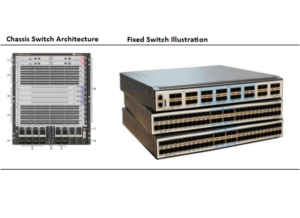
Data Center Switches: Current Landscape and Future Trends
As artificial intelligence (AI) drives exponential growth in data volumes and model complexity, distributed computing leverages interconnected nodes to accelerate training processes. Data center switches play a pivotal role in ensuring timely message delivery across nodes, particularly in large-scale data centers where tail latency is critical for handling competitive workloads.
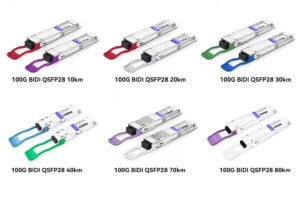
Comprehensive Guide to 100G BIDI QSFP28 Simplex LC SMF Transceivers
The demand for high-speed, cost-effective, and fiber-efficient optical transceivers has surged with the growth of data centers, telecommunications, and 5G networks. The 100G BIDI QSFP28 (Bidirectional Quad Small Form-Factor Pluggable 28) transceiver is a standout solution, enabling 100 Gigabit Ethernet (100GbE) over a single-mode fiber (SMF) with a simplex LC
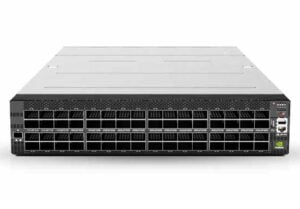
NVIDIA SN5600: The Ultimate Ethernet Switch for AI and Cloud Data Centers
The NVIDIA SN5600 is a cutting-edge, high-performance Ethernet switch designed to meet the demanding needs of modern data centers, particularly those focused on artificial intelligence (AI), high-performance computing (HPC), and cloud-scale infrastructure. As part of NVIDIA’s Spectrum-4 series, the SN5600 delivers unparalleled throughput, low latency, and advanced networking features, making
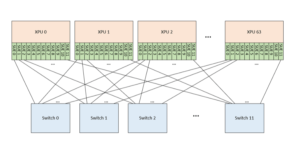
How Ethernet Outpaces InfiniBand in AI Networking
Ethernet Challenges InfiniBand’s Dominance InfiniBand dominated high-performance networking in the early days of generative AI due to its superior speed and low latency. However, Ethernet has made significant strides, leveraging cost efficiency, scalability, and continuous technological advancements to close the gap with InfiniBand networking. Industry giants like Amazon, Google, Oracle,
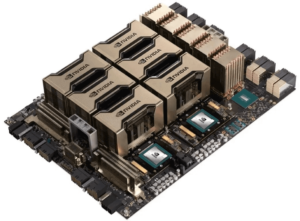
Understanding NVIDIA’s Product Ecosystem and Naming Conventions
Compute Chips—V100, A100, H100, B200, etc. These terms are among the most commonly encountered in discussions about artificial intelligence. They refer to AI compute cards, specifically GPU models. NVIDIA releases a new GPU architecture every few years, each named after a renowned scientist. Cards based on a particular architecture typically
